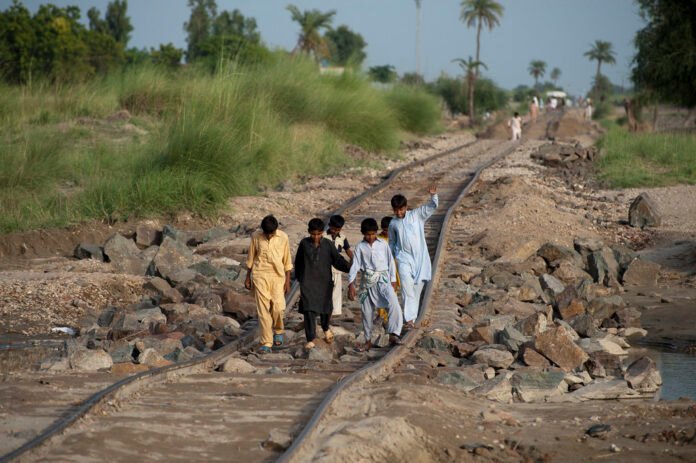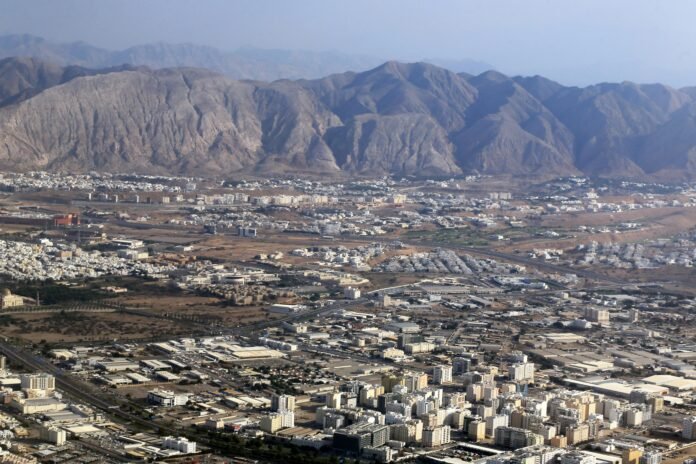Pakistan’s health insurance is changing, with public and private sectors enhancing healthcare access. Public insurance mainly aids low-income, vulnerable, and government workers, while private insurance caters to the middle and upper classes, businesses, and those seeking private care. Here’s a comparison of their differences and similarities:
✅ Similarities
- Healthcare Financing Goal
Public and private health insurance in Pakistan aim to cut personal medical expenses, which are still high. They provide financial security and healthcare access for all groups. - Coverage for Inpatient Services
Both systems provide coverage for hospital stays and surgeries, including critical illness treatments. For instance, the Sehat Sahulat Program (SSP) and private plans such as Jubilee Life Insurance cover significant hospitalization costs. - Third-party Administration
State Life Insurance Corporation (SLIC) manages public programs like SSP and PMNHP, alongside its private health plans. This dual role leads to similar structures in claims processing and hospital enrollment. - Cashless Facilities
Leading public schemes and private insurers both offer cashless treatment options at empaneled hospitals, easing the burden on beneficiaries during emergency care.
❌ Differences
- Target Population
- Public Insurance: Primarily targets underprivileged populations, government employees, and formal sector workers. Examples include SSP, PMNHP, and PESSI.
- Private Insurance: Caters to the middle/upper income class, expats, and corporate clients, such as those insured by Jubilee, Adamjee, or Pak Qatar Takaful.
- Public Insurance: Primarily targets underprivileged populations, government employees, and formal sector workers. Examples include SSP, PMNHP, and PESSI.
- Eligibility and Enrollment
- Public schemes often rely on poverty databases (e.g., NADRA) and provincial eligibility criteria.
- Private insurance is voluntary, open to all who can afford premiums, and often includes customizable plans.
- Public schemes often rely on poverty databases (e.g., NADRA) and provincial eligibility criteria.
- Scope of Services
- Public programs are often limited to inpatient or critical care and predefined treatments, based on budget constraints.
- Private plans offer broader benefits, including outpatient care, maternity, dental, optical, and daycare surgeries.
- Public programs are often limited to inpatient or critical care and predefined treatments, based on budget constraints.
- Funding and Cost
- Public insurance is subsidized or free, funded by government allocations or employer contributions (PESSI).
- Private insurance is premium-based, with costs depending on age, plan, and coverage type.
- Public insurance is subsidized or free, funded by government allocations or employer contributions (PESSI).
- Consumer Experience
- Public schemes often face bureaucratic hurdles, variable quality, and delays in service delivery, especially in remote areas.
- Private insurers generally offer faster processing, dedicated helplines, digital health cards, and premium customer care.
- Public schemes often face bureaucratic hurdles, variable quality, and delays in service delivery, especially in remote areas.
Top Public Health Insurance Programs in Pakistan
Pakistan’s public health insurance is vital for affordable healthcare, especially for the underprivileged, government employees, and formal sector workers. Despite the growth of private insurance, public schemes remain essential for millions. Key public health insurance programs in Pakistan are evaluated based on cost, services, eligibility, financial structure, and consumer satisfaction.
1. Sehat Sahulat Program (SSP)(Official website: https://sehatcardplus.gov.pk)
- Cost: Free for eligible families (government-funded).
- Coverage Features: Comprehensive inpatient care, including hospitalizations, emergency surgeries, maternity, and priority treatments. Coverage extends to public and private empaneled hospitals.
- Eligibility: Available to families below the poverty line as per the national socioeconomic database.
- Financial Features: Fully subsidized by the government; managed by the State Life Insurance Corporation (SLIC); limits vary by province but can go up to PKR 1 million annually per family.
- Consumer Satisfaction Score: 80–85% — Citizens value the cashless access, wide network of hospitals, and substantial financial protection. Occasional delays and awareness gaps lower satisfaction in rural regions.
2. Prime Minister’s National Health Program (PMNHP)
- Cost: Free of charge to beneficiaries.
- Coverage Features: Similar to SSP, covers hospitalization, secondary care, and high-cost illnesses like cardiac surgery, oncology, and dialysis.
- Eligibility: Poor and vulnerable citizens as identified by the Benazir Income Support Program (BISP) and NADRA records.
- Financial Features: Fully funded by federal and provincial governments; per-family benefit limits vary but often cover PKR 300,000–600,000 annually.
- Consumer Satisfaction Score: 75–80% — Highly appreciated in provinces where implemented effectively. Criticized in some areas due to administrative inefficiencies and access disparities.
3. Provincial Employees Social Security Institutions (PESSI / ESSI)
- Cost: Employer-funded; 6% of wages contributed by the employer.
- Coverage Features: Covers outpatient services, maternity, surgeries, hospitalization, and emergency care. Benefits extend to employees and their families.
- Eligibility: Registered formal-sector employees in Punjab, KP, Sindh, and Balochistan.
- Financial Features: Operated as a contributory insurance model; provincial governments oversee funds and hospitals.
- Consumer Satisfaction Score: 65–75% — Valued for covering both minor and major illnesses, though underfunded facilities and long waiting times are common complaints.
4. Government Employee Health Schemes (Federal/Provincial)
- Cost: Free for eligible government employees and their dependents.
- Coverage Features: Extensive coverage for outpatient, inpatient, specialist consultation, and chronic disease management.
- Eligibility: Open only to serving and retired government employees and their families.
- Financial Features: Fully financed through government budgets; services provided in government hospitals and select private facilities.
- Consumer Satisfaction Score: 70–80% — Praised for broad coverage but criticized for limited access to high-quality private hospitals and administrative red tape.
5. State Life Insurance Corporation (SLIC) – Public Health Administration(Official website: https://www.statelife.com.pk)
- Cost: Varies based on the program administered; free for SSP and PMNHP enrollees.
- Coverage Features: Acts as the main third-party administrator (TPA) for SSP, PMNHP, and other public health projects. Handles claims, empanelment, and fund distribution.
- Eligibility: Not a direct insurer but a government-run facilitator for public schemes.
- Financial Features: Manages multi-billion rupee public health funds under government oversight.
- Consumer Satisfaction Score: 75–80% — Recognized for expanding health protection infrastructure; administrative efficiency varies across provinces.
Top 5 Private Health Insurance Providers in Pakistan
Private health insurance in Pakistan is crucial for middle and upper-income groups, corporate workers, and those wanting quality healthcare. These insurers provide flexible plans with different premiums, wider hospital access, and advanced care not found in public options. Here’s a summary of the top five private health insurers in Pakistan, detailing their costs, services, eligibility, and customer satisfaction.
1. Jubilee Life Insurance(Official website: https://jubileelife.com)
- Cost: Starting around PKR 12,000–30,000 annually for individuals, varies by age and plan.
- Coverage Features: Inpatient care, daycare surgeries, maternity, emergency room services, diagnostic tests, and pre/post-hospitalization. Also offers specialized plans like ParentsCare (ages 45–70).
- Open for: Individuals, families, and corporate clients.
- Financial Features: Offers digital health cards for cashless access to over 200 empaneled hospitals. Online claim processing and mobile support available.
- Consumer Satisfaction Score: 85–90% — Highly rated for digital services, hospital reach, and tailored plans for older adults.
2. Adamjee Insurance Company(Official website: https://www.adamjeeinsurance.com)
- Cost: Premiums begin around PKR 10,000 annually; group and family plans are customizable.
- Coverage Features: Inpatient and outpatient services, diagnostic tests, maternity, surgeries, and emergency treatments. Some plans include international travel health coverage.
- Open for: Individuals, families, and corporates.
- Financial Features: Flexible premium payment terms, strong hospital partnerships nationwide, cashless service available at top-tier hospitals.
- Consumer Satisfaction Score: 80–85% — Praised for affordability, extensive coverage, and reliability; some users cite moderate claim processing delays.
3. EFU Life Assurance Ltd.(Official website: https://www.efulife.com)
- Cost: Health riders and standalone plans range from PKR 8,000 to 25,000 annually depending on coverage.
- Coverage Features: Hospitalization, critical illness, surgical procedures, ICU, and cancer care. Often bundled with life insurance.
- Open for: Individuals and corporate clients.
- Financial Features: Strong financial backing, customizable riders, and integration with savings and life plans.
- Consumer Satisfaction Score: 78–82% — Customers appreciate long-term value and the option to combine health with investment plans.
4. Alfalah Insurance Company(Official website: https://www.alfalahinsurance.com)
- Cost: Starts at around PKR 9,000 per year; varies by age, health history, and add-ons.
- Coverage Features: Hospital room charges, surgeries, diagnostic labs, maternity, and specialist consultation. Some group policies include dental and optical coverage.
- Open for: Individuals, families, and SMEs.
- Financial Features: Easy online premium payments, well-structured claim settlement process, and corporate partnerships.
- Consumer Satisfaction Score: 75–80% — Noted for efficient customer service and corporate-friendly policies, though coverage limits can be modest in basic plans.
5. Pak-Qatar General Takaful(Official website: https://www.pakqatar.com.pk/general)
- Cost: Begins at approximately PKR 10,000 annually; Shariah-compliant contribution model.
- Coverage Features: Inpatient care, maternity, emergency services, pre/post-hospitalization, and optional outpatient coverage.
- Open for: Individuals and families, with separate corporate offerings.
- Financial Features: Operates under the Takaful model (mutual risk-sharing), offers cashless hospitalization at numerous Islamic and conventional hospitals.
Consumer Satisfaction Score:80–85% — Popular among clients seeking ethical, Islamic insurance options. Valued for transparency and equitable risk-sharing.
READ MORE: Private and public health insurance of Maldives (Make informed choices)


